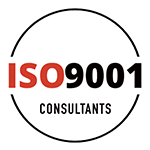Conducting an ISO 9001 audit is like giving your business a health check-up. It helps ensure that everything works as it should and that the business is on track with its quality goals. Regular audits are crucial for maintaining high standards and provide valuable insights that can lead to significant improvements.
Preparing thoroughly for an audit helps make the process smoother and more productive. Organising documents and getting teams ready can make a big difference. An effective audit maintains standards and empowers employees, encouraging them to participate in the continuous improvement process. This shared commitment can pave the way for sustained success and a strong reputation for excellence.
Understanding the Purpose of ISO 9001 Audits
Conducting ISO 9001 audits plays a vital role in ensuring that a business adheres to the quality standards set by the ISO. These audits serve several important purposes. The primary goal is to verify that the organisation consistently meets the requirements of the ISO 9001 standard. By doing so, businesses can ensure their processes deliver the quality customers and stakeholders expect.
Audits provide several benefits. They help identify areas where the business excels and where there’s room for improvement. By regularly checking procedures and performance, businesses can maintain high standards and improve efficiency. Additionally, audits can uncover unnoticed issues before they escalate into major problems, reducing the risk of disruptions.
The audit process is crucial for continuous improvement. It acts as a checkpoint for the organisation to evaluate its strengths and weaknesses objectively. By assessing detailed audit reports, businesses can focus on making strategic improvements. This ongoing evaluation maintains quality and drives innovation and improvement across the company, ensuring it stays competitive and aligned with customer demands.
Preparing for a Successful Audit
Preparing for an ISO 9001 audit requires careful planning and organisation. A well-prepared audit ensures a smooth assessment process and helps the business effectively present its adherence to quality standards.
To start, businesses should review and update all relevant documents. Ensure that quality manuals, procedures, and records are up-to-date and accurately reflect current practices. Clear and comprehensive documentation provides a strong foundation for the audit process.
Here are key steps for successful audit preparation:
– Internal Audit: Conduct an internal audit before the actual one. This pre-audit helps identify areas needing attention and ensures all processes align with ISO 9001 standards.
– Employee Training: Ensure that all staff members understand the audit objectives. Training can help them understand their roles and responsibilities during the audit.
– Organise Documents: Sort and organise documents so that auditors can easily access and review them. Create a checklist to ensure nothing is missed.
– Audit Coordination: Coordinate with departments to ensure readiness and address concerns or questions before the audit.
Preparation helps create a positive audit environment. The process becomes more efficient when everyone understands their part and documents are in order. This clarity and organisation demonstrate the business’s commitment to quality, paving the way for a successful outcome.
Conducting the Audit: Best Practices
Running a successful ISO 9001 audit requires more than just preparation; it involves executing the process smoothly to ensure a comprehensive evaluation. Effective methods for conducting audits can make the process seamless and productive.
Begin by creating a clear schedule for the audit. This ensures each part of the organisation knows when and what will be assessed, reducing disruptions. An organised approach helps auditors focus on evaluating systems and procedures efficiently.
Engaging employees during the audit is essential. Encourage open communication by informing staff that their insight is valuable for the audit’s success. This builds a cooperative environment where employees feel comfortable sharing information and feedback.
Use a checklist during the audit to focus on relevant standards and requirements. This ensures no critical area is overlooked and helps maintain consistency throughout the audit process. After completing each audit section, summarise findings with the team to clarify doubts.
Clear communication and a structured approach ensure the audit runs smoothly, benefiting the audit team and the organisation. These practices lead to accurate results, reflecting the business’s adherence to ISO 9001 standards.
Reviewing Audit Findings and Continuous Improvement
Once the audit is complete, reviewing and addressing the findings is crucial for ongoing progress. This step involves analysing audit results to identify strengths and areas needing improvement.
Start by prioritising findings based on their impact on quality standards. Focus first on high-impact areas that pose risks to the organisation’s efficiency or customer satisfaction. Addressing these findings promptly ensures that critical issues do not persist and lead to larger problems.
Engage cross-functional teams for action plans. Collaborative efforts in addressing audit findings encourage diverse perspectives and innovative solutions. This teamwork fosters a sense of collective responsibility for quality improvement.
When addressing issues, incorporate insights from the audit to make data-driven decisions. Using audit findings as a roadmap, businesses can tailor their improvement strategies to meet specific quality objectives.
Audits also provide opportunities for continuous improvement initiatives. Regularly reviewing and refining processes based on audit insights can enhance efficiency and quality across the organisation. This continuous cycle of evaluating and improving processes strengthens commitment to quality and sustains long-term growth.
Conclusion
ISO 9001 audits are essential in guiding businesses toward excellence in quality management. A well-executed audit confirms compliance with standards and uncovers areas for enhancement, driving the organisation toward better performance. Through thorough preparatory steps, smooth execution, and effective review, businesses can leverage ISO 9001 audits to fortify their systems and foster a culture of continuous improvement.
As companies strive to meet customer expectations and market demands, the role of ISO 9001 remains vital. Audits offer a structured pathway to identify gaps and successes within an organisation. By regularly using audit findings to refine processes and engage employees, a business ensures its commitment to quality is not just about maintaining standards, but proactively improving them.
If your business seeks to enhance its quality management systems or prepare for an ISO 9001 audit, ISO 9001 Consultants can guide you. Our expertise in providing ISO audit and consultancy services ensures your operations align with global standards, driving quality and success. Contact us today to explore how we can support your quality initiatives and help your business grow sustainably.








Users Comments
Get a
Quote